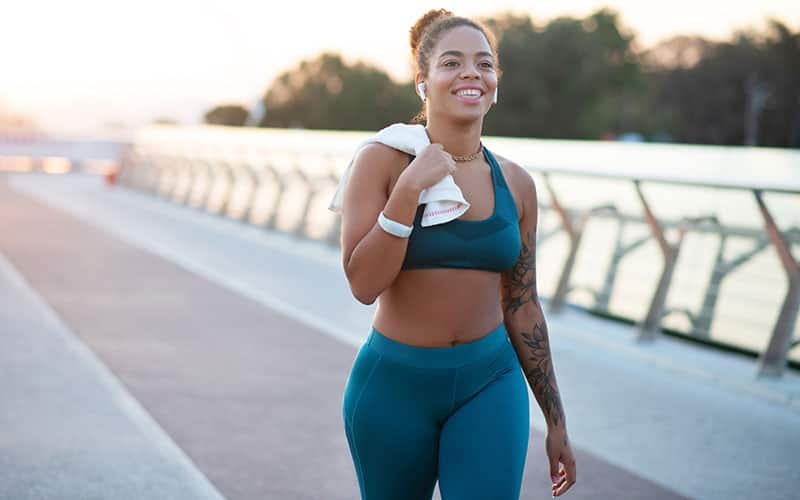Benefits of Incorporating Walking in Your Triathlon Training
by Patti Waller

Master athletes know all too well the aches and pains that come with participating in triathlon, and new athletes will soon learn that the body can only take so much impact. Coaches must create training plans that encourage active recovery, which is simply doing something at lower intensity.
Age group athletes can incorporate active recovery during the run portion of triathlon to help increase their longevity. Running also causes more injuries due to frequency, intensity and time invested when considering both the run and triathlon seasons. Many athletes shift right into long-distance running as soon as they finish their last triathlon.
Jeff Galloway popularized the run/walk in the 1970s, calling it the Galloway Method. He utilizes a Magic Mile (the best mile you can run) and has a formula that calculates the approximate ratio of run to walk to get you to the finish line no matter the distance. His book, The Run/Walk/Run Method, is available if you want a deeper understanding.
The thought of performing workouts at a lower intensity is frequently thought as a sign of being slow and/or weak by endurance athletes. But the human body can only handle so much impact over time before it shows signs of stress and strain. The following injuries are indicative of underlying issues or too much impact: Plantar Fasciitis, shin splits, IT Band Syndrome, piriformis tightness, runner’s knee and low back pain.
Injury is not the only concern. I know athletes that swim and bike but are fearful of competing in a triathlon because running intimidates them. Aquabike (swim/bike) is a rewarding option, but the run/walk is another avenue that should be explored.
Here’s an opportunity to educate the athletes about utilizing a run/walk plan. It is also beneficial to a seasoned athlete who may need to introduce active recovery into their training.
What will the athlete achieve with the run/walk method?
- Confidence to complete the distance
- Better recovery and stronger returns on the next training day
- Help with recovering from overuse injuries
- Reduction in overall fatigue
- Provide focus on biomechanics when in run and walk mode
If any or all of these descriptions sound familiar, you may want to try the run/walk method:
- Been off from running for 6 months – 1 year
- Continually hitting the wall on long runs
- Running in heat and humidity
- Learning to increase distance gradually without wear and tear on the body
- Returning to sport from a pregnancy
Galloway’s method does not factor in the swim and bike, but the methodology is still highly recommended and proven to be a game changer. Testing it out is easy. Just set the watch alarm to run 2 minutes/walk 1 minute. If the athlete is more experienced, increase run time up to 6-8 minutes with a walk break lasting between 30 seconds and 1 minute. The legs will recover more quickly the more this is practiced.
How will this affect the finish line numbers? Surprisingly, not a significant amount. But, if an athlete is competing for a specific finish time, run/walk ratio must be determined in advance with training based on the mile pace average.
Don’t fear the walk, it is still forward motion with a purpose.